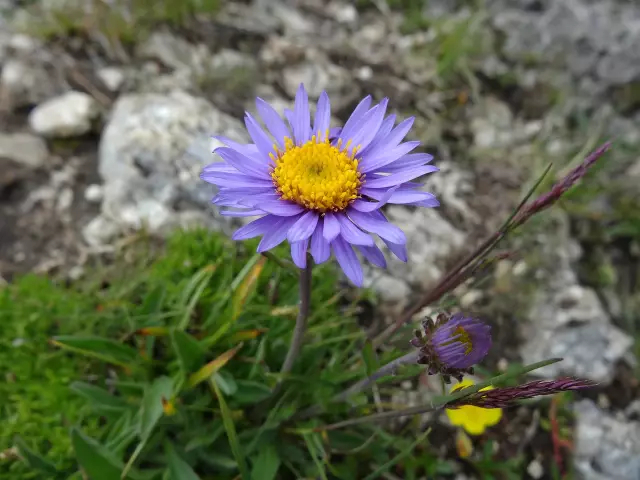- Author Rachel Wainwright [email protected].
- Public 2023-12-15 07:39.
- Last modified 2025-11-02 20:14.
Mushrooms
Mushrooms are a group of living organisms used in cooking, traditional and alternative medicine. There are several groups - edible mushrooms, conditionally edible mushrooms, inedible mushrooms and poisonous mushrooms.

Calorie content of mushrooms
Despite the general belief that mushrooms are nutritious foods, they are not. The calorie content of mushrooms is very low, but after heat treatment and during the cooking process, they absorb the heat like a sponge, and the calorie content of stewed or fried mushrooms becomes high.
Due to their low calorie content, properly cooked mushrooms are good as a diet food.
Useful properties of mushrooms
Mushrooms are rich in minerals and vitamins. Vitamin A is present as carotene. Vitamins B1 and B2, PP and C are present in large quantities. An interesting fact is that mushrooms contain vitamin D, an anti-rachitis vitamin that is not found in any green plant.
Mushrooms are very rich in protein (somewhere between plant and animal protein), which, however, is only absorbed by 60% due to chitin, which contributes to the poor digestibility of the mushrooms. It is because of chitin that, despite the low calorie content of mushrooms, they are considered heavy food. Therefore, this protein has a lower value than in eggs, meat and dairy products, but higher than in carrots.
In addition, mushrooms contain a lot of potassium, phosphorus and calcium, as well as enzymes that help break down fats, glycogen and fiber.
Mushrooms should not be eaten raw, they must be cooked. However, unfortunately, heating to 100 degrees significantly reduces the healing properties in them. Therefore, it has long been customary to salt and dry them.
Application in traditional medicine
The beneficial properties of mushrooms allow them to be used in traditional medicine in the form of drug therapy. The possibility of their use is being studied in oncology.
Mold fungi, thanks to the release of penicillin and streptomycin from them, gave birth to the era of antibiotics.
A valuable antibiotic, Lactaroviolin, is obtained from the edible mushrooms of camelina, which stops the growth of a number of harmful bacteria.
From giant talkers, an antimicrobial substance is obtained - Cliptobicin, similar to Mycomycetin, which is used to treat tuberculosis of the skin and bones.
The antibiotic Boletol is obtained from the edible mushrooms of poddubniki, which helps to extinguish infectious diseases.
And edible mushrooms such as chanterelles, thanks to the ergosterol they contain, are leaders in antibiotic therapy. The extract from Chanterelles is able to neutralize the staphylococcal pathogen, and the quinomannose substance fights parasites in the human body.
Fiber is used to treat eczema, lupus, and psoriasis.
Gray dung beetles are the source of the Antabuse substance, which has been successfully used to treat alcoholism.
Millers have anti-inflammatory effects.
Poria coconut and tinder fungus, belonging to the category of ganoderma, in the East belong to traditional medicines and are used in oncology.
The edible mushrooms in India are used to obtain the drug Campestrin, which is used to treat typhoid and paratyphoid fever.
Colibia and greenfinches are materials for the manufacture of mushroom anticoagulants, which are effective in the treatment of atherosclerosis and blood thickening.
For some time now, Brazilian agarics, which have anti-cancer properties and suppress various fungal flora, have also been used in medicine.
Meadow honey fungus, a common edible mushroom, is used in the fight against E. coli and other microbes. It also contains substances that have a beneficial effect on the thyroid gland.
Shiitake mushrooms are an antiviral and antifungal agent known in Japan. The drug Lentinan is made from them.
Mushrooms cordyceps, maitaki, lin-ji are immunomodulators that suppress tumor activity.
Hat mushrooms in traditional medicine are mainly used as a medicine in the form of various extracts, tinctures and dietary supplements.
To date, the pharmacology of fungi is not sufficiently developed. Pharmacologists are not yet in a hurry to accept the fact that the beneficial properties of mushrooms are capable of curing many diseases, and mushrooms are most widely used for treatment in folk medicine.
The use of mushrooms in traditional medicine
Poisonous mushrooms, fly agaric, have long been used in folk medicine. At first glance, this seems rather strange - the use of poisonous mushrooms for medicinal purposes. However, in practice, small doses of poisons have long been used for medicinal purposes. According to studies, the poisonous mushroom red mushroom contains poisons such as muscimol and mycoatropin, as well as the antibiotic substance muscarufin, which can inhibit the growth of tumors.
It is already a proven fact that the drug made from the poisonous mushroom fly agaric has a positive effect on vasospasm, choreatic and epileptic conditions, with angina, sclerosis and disorders of the spinal cord.
A well-known folk remedy is a tincture of a poisonous mushroom fly agaric, used to treat skin diseases and rheumatism.
Gray-yellow and brick-red mushrooms are used in folk medicine as a laxative and emetic. Pepper milk is used to treat tuberculosis.

In Austria, autumn mushroom is used as a laxative, since it contains substances that enhance the activity of the digestive organs.
A decoction of the chaga mushroom is also widely used in traditional medicine. It is believed that with systematic use, it has a stimulating effect on the body, improves general condition, treats gastritis of the stomach and other diseases of the gastrointestinal tract.
Kombucha, a representative of the symbiotic association of yeast fungi, is widely popular among the people. It is grown at home and drink infusion from it before eating. Its infusion has a tonic, tonic and calming effect.
Warnings and contraindications
It is highly recommended to consult your doctor before starting mushroom treatment.
Any ingestion of edible or poisonous mushrooms for medicinal purposes should be used with great caution by pregnant women and nursing mothers.
People taking anticoagulants daily, incl. and aspirin, reishi supplementation is contraindicated as it contains blood thinners. Also, taking reishi supplements should be stopped 2 weeks before surgery, including dental surgery. This mushroom is contraindicated in people with poor blood clotting or with a history of hypoglycemia, hypotension, active gastrointestinal bleeding, stomach ulcers or hemophilia.
Caution should be taken when starting mushroom treatment for people taking: antiviral drugs, antibiotics, immunosuppressants, diabetes medications, pain relievers, amphetamines, drugs that lower blood pressure, drugs that lower blood sugar.
YouTube video related to the article:
Found a mistake in the text? Select it and press Ctrl + Enter.






